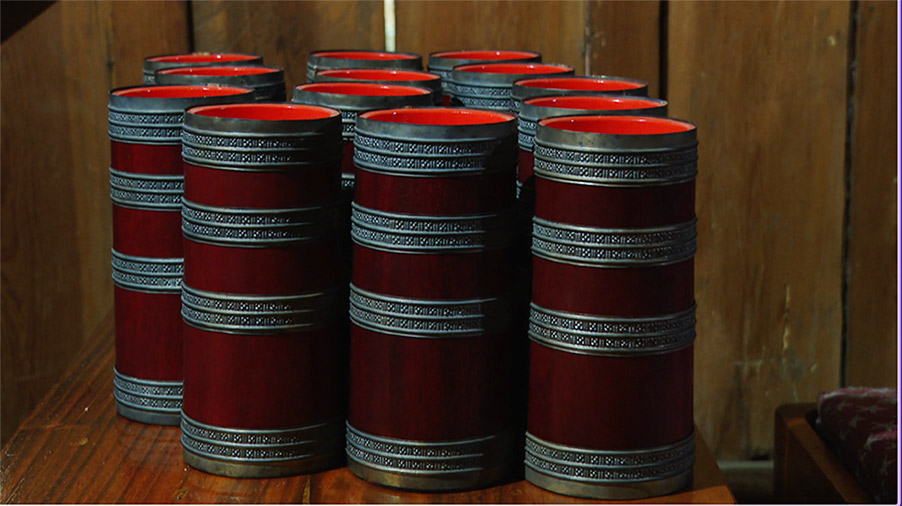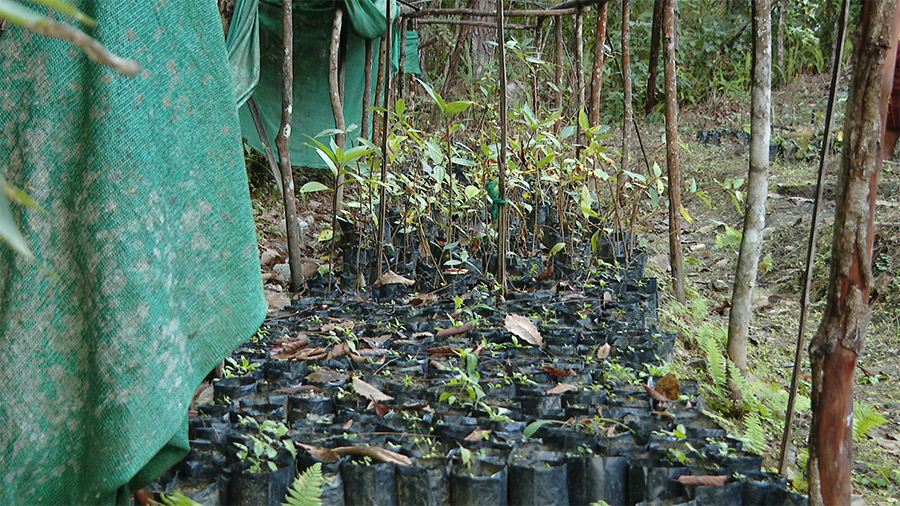
Most Bhutanese homes will have a Palang, a traditional handmade container used to store Ara. But what most people do not know is that the finest crafted Palangs are made in Moorung village, located in Monggar’s Kengkhar Gewog. However, despite having a good market, the producers of Palang face challenges in sourcing raw materials for their craft. Unfazed by these challenges, the villagers have started growing trees required to make Palang.

Two types of trees, Boehmeria rugulosa and Gmelina arborea locally known as Dongtshong shing and Kholom shing, are used for crafting the finest Palangs.
The 37-household village has 15 craftsmen whose livelihoods depend on selling Palangs. Determined to sustain their business, the villagers started raising saplings of the two trees in their five-acre nursery in 2019.
Sangay Tshewang, a 51-year-old father of four, started making Palangs in 2009. Producing two Palangs a day, Sangay earns about Nu 300,000 annually.
Sangay Tshewang said, “We do not encounter any difficulties in selling our Palangs. Our main challenge lies in the time-consuming process of crafting and sourcing raw materials, which sometimes delays our production. Once completed, we sell our Palangs in Thimphu and Tawang, and there is also demand from customers in Trashigang.”
After raising the two plants in the nursery, the saplings are transplanted into the 500-acre Moorung Community Forest. To date, more than 1,500 saplings have been planted.
Additionally, the Moorung Community Forest Group has sold over 1,000 saplings at Nu 10 per sapling to other community forests in the region.
Furthermore, some individuals have also cultivated Dongtshong shing on their land, and these trees are now ready for harvest.
“We are planting these trees to ensure easy accessibility for the benefit of our future generations. Many of the trees that were once abundant are now depleted, so we are replanting them. While the newly planted trees mature, we are sourcing raw materials from other gewogs to continue making Palangs,” said Shacha Dorji, a member of Moorung Community Forest.
“After establishing the community forest, we began planting the trees. We are committed to continuing this effort tirelessly. Our goal is to ensure the continuous growth of these trees and to make their cultivation sustainable, ensuring that they remain available for our children to use in the future,” said Ugyen, another member of Moorung Community Forest.
The current market price for a pair of Palangs ranges between Nu 1,500 and 6,000, depending on the size of the product.
Karma Wangdi, Monggar
Edited by Sherub Dorji












